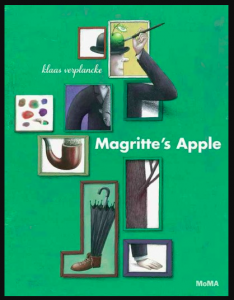Learn a little about art history…
Before you start, though, here are a few special words:
Juxtaposition: place objects not usually put together next to each other
Dislocation: place objects in a setting in which they are not usually found
Metamorphosis: make objects seem to be turning into something else; e.g. a fish turning into a boat
Transformation: make objects change in odd ways; e.g. a train that is melting
CUBISM
• begun by Pablo Picasso (Spanish, 1882-1973) and Georges Braque (French, 1882-1963) in 1907
• paintings are not supposed to look real
• subject matter is broken up, analyzed, and reassembled in an abstracted form
• Paul Cézanne, said artists should treat nature “in terms of the cylinder, the sphere and the cone.”
• inspired by African sculpture, by painters Paul Cézanne (French, 1839-1906) and Georges Seurat (French, 1859-1891)
• Early cubists used mainly grays, browns, greens, and yellows. After 1914, Cubists started to use brighter colors.
• Cubism was the beginning of the Abstract and Non-objective art styles.
Take a look at some examples: Georges Braque, Pablo Picasso
EXPRESSIONISM
• term first used in 1910
• paintings expresses certain feelings about something
• more concerned about showing those feelings than showing the actual objects in a realistic way
• inspired by Edvard Munch: The Scream
Take a look at some examples: Marc Chagall, Wassily Kandinsky, Ernst Ludwig Kirchner
MARC CHAGALL
• born on July 7, 1887 in Vitebsk, Russia
• in 1932 he moved to France
• lived in the United States from 1941 to 1948
• return to France and died there in 1985
• paintings are in the style of Expressionism and Cubism
• often painted violinists because he played the violin and also in memory of his uncle, who also played
• famous for his paintings of Russian-Jewish villages.”
Look at some of his work: Fiddler, Stained Glass Window, A Collection of Images
Learn more about his life, too.
FAUVISM
• lasted only four years, beginning in 1905
• the name is French for “wild beasts”
• the paintings had bright and unusual colors
• subjects in the paintings were shown in a simple way with wild colours and shapes
Take a look at some pictures by Henri Matisse: Charing Cross Bridge, Open Window, Les toits de Collioure
SURREALISM
• name coined in 1917
• popular in France in the 1920s -1930s
• paintings generally based on dreams
• filled with familiar objects that look strange or mysterious
• changes how people think and feel about things
Take a look at some paintings by these artists: Pablo Picasso, Giorgio de Chirico, Marc Chagall, Salvador Dali, Max Ernst, Paul Klee, Rene Magritte.
And take a look at one of the most famous paintings of the Spanish Civil War. It is seen as both a reminder of the horrors of the war and a call for peace.
Finally, look at these beautifully fantastic paintings by Vladimir Kush.
Verplanke, Klaas. Magritte’s Apple. New York: The Museum Of Modern Art, 2016.
Each artist has a unique vision of the world. René Magritte’s vision was a fantastical world of floating boulders and ships made of water. This gentle picture book humorously introduces readers to Magritte’s surrealist style. The full-page illustrations inspire wonder and encourage reflection. The historical notes at the end provide background information.Each artist has a unique vision of the world. René Magritte’s vision was a fantastical world of floating boulders and ships made of water. This gentle picture book humorously introduces readers to Magritte’s surrealist style. The full-page illustrations inspire wonder and encourage reflection. The historical notes at the end provide background information. Useful as an introduction to surrealism or a discussion on creativity..
There are some composers whose music can be considered surrealistic…
Erik Satie
Maurice Ravel
Bela Bartok
To review…
Fauvism: 1905-1909; simple shapes and wild colours; Matisse
Cubism: started in 1907; spheres, cylinders; cones; not supposed to look real; inspired by Cezanne, African art; Picasso and Braque
Expressionism: started in 1910; emphasizes emotions; inspired by Munch’s ‘Scream’; Chagall
Surrealism: 1917 -1930s; changes how people think and feel; Chagall, Dali, Klee, Magritte, Picasso
This page may be copied for use with students if the following credit is provided:
©2012 Sophie Rosen.
Now make your own surreal picture…
a style of art depicting nonrational imagery with unexpected juxtapositions; popular in France in the early 1900s
1. Find a magazine picture you like.
2. Look for little pictures you can cut out and paste on top to create a new image.
3. As you work, think about what emotions you are creating.
4. As you work, cut and glue carefully.
5. Remember that you need both a creative mind and a skillful hand to create memorable art.
Here are some examples created by eighth grade students…





